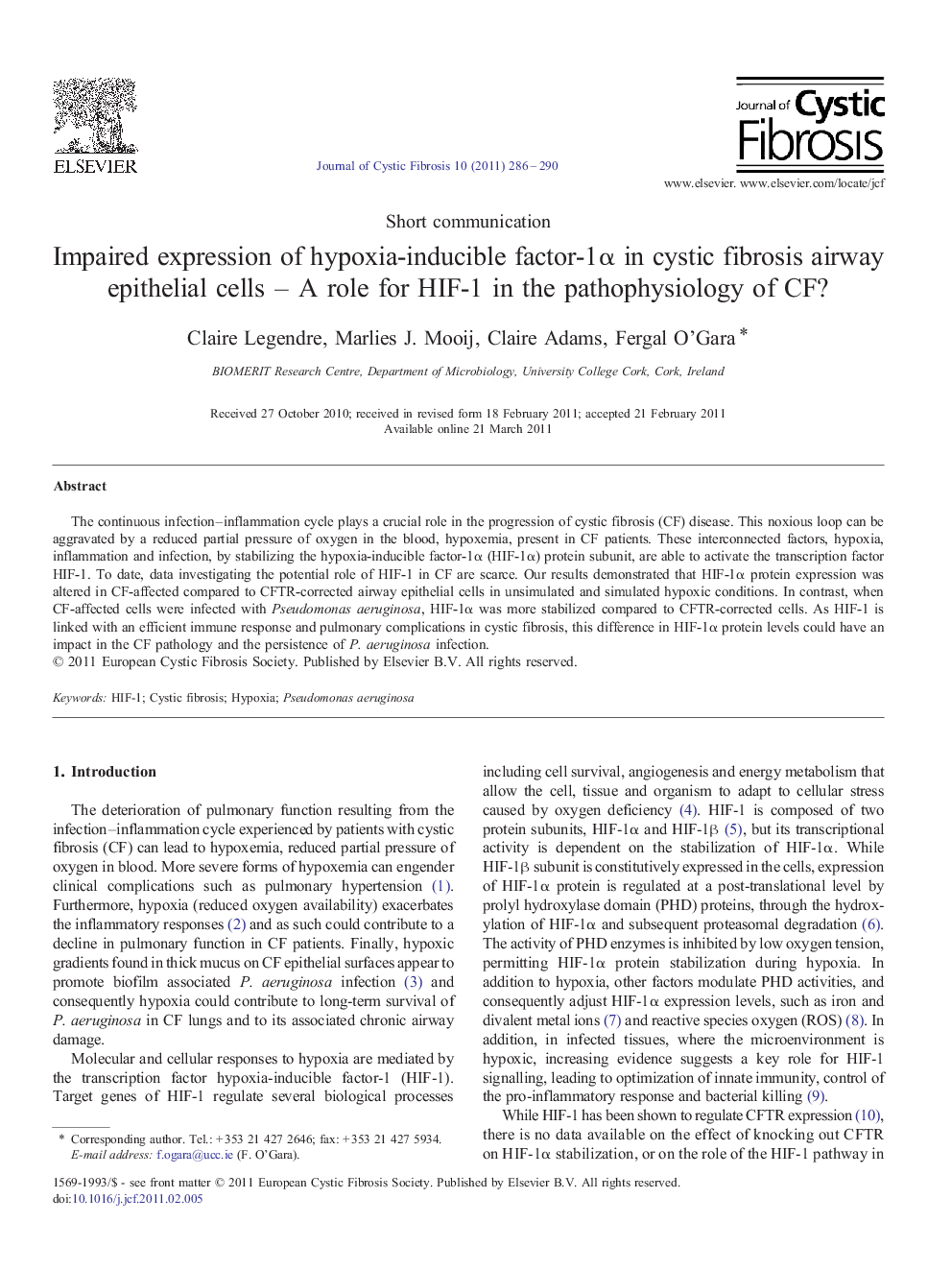| Article ID | Journal | Published Year | Pages | File Type |
|---|---|---|---|---|
| 4208811 | Journal of Cystic Fibrosis | 2011 | 5 Pages |
The continuous infection–inflammation cycle plays a crucial role in the progression of cystic fibrosis (CF) disease. This noxious loop can be aggravated by a reduced partial pressure of oxygen in the blood, hypoxemia, present in CF patients. These interconnected factors, hypoxia, inflammation and infection, by stabilizing the hypoxia-inducible factor-1α (HIF-1α) protein subunit, are able to activate the transcription factor HIF-1. To date, data investigating the potential role of HIF-1 in CF are scarce. Our results demonstrated that HIF-1α protein expression was altered in CF-affected compared to CFTR-corrected airway epithelial cells in unsimulated and simulated hypoxic conditions. In contrast, when CF-affected cells were infected with Pseudomonas aeruginosa, HIF-1α was more stabilized compared to CFTR-corrected cells. As HIF-1 is linked with an efficient immune response and pulmonary complications in cystic fibrosis, this difference in HIF-1α protein levels could have an impact in the CF pathology and the persistence of P. aeruginosa infection.
